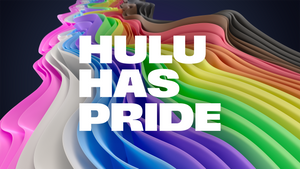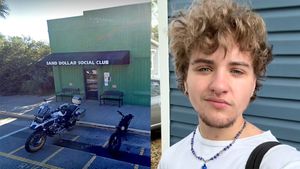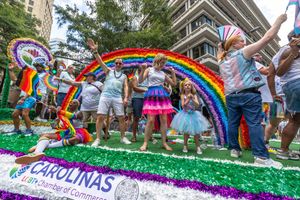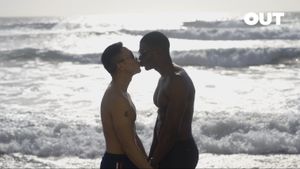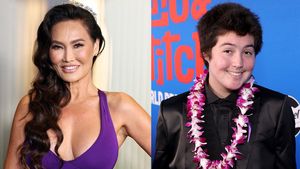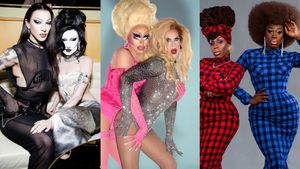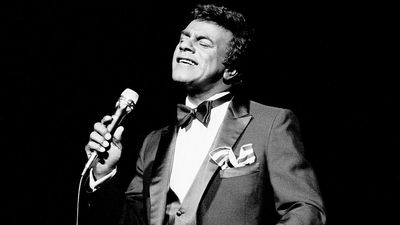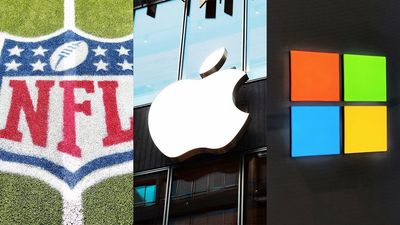LGBTQ+ people, especially transgender people, are rightly traumatized by last week’s election results, as are many women, people of color, and anyone who cares about justice and equality. But it’s useful to remember that at other times we were faced with forces of oppression, we acted up and fought back.
From the Mattachine Society to ACT UP to marriage equality, here’s a look at LGBTQ+ resistance in the U.S. over the past hundred years or so.
Keep up with the latest in LGBTQ+ news and politics. Sign up for The Advocate's email newsletter.
The Roaring '20s
Well, the decade wasn’t so roaring for LGBTQ+ people — gay sex, or “sodomy,” was a crime almost everywhere, arrests for cross-dressing were common, and so was being fired because of your sexual orientation or gender identity. But there were still gay bars (or speakeasies), drag balls, and other semi-secret venues for community gatherings, and early activists were fighting back.
One of the earliest American activists was Henry Gerber of Chicago. Born in 1892 in Germany, he immigrated to the U.S. with his family in 1913, then went back to Germany as a member of the U.S. Army in 1920. There he was exposed to that country’s LGBTQ+ liberation movement, which sadly would be quashed by the Nazi regime a decade later. One of the chief German activists was scientist Magnus Hirschfeld, who fought for equal rights for the community and ran a gender transition clinic. Inspired, Gerber started the Society for Human Rights upon his return to Chicago. The group soon fell victim to police harassment, and Gerber lost his job with the U.S. Postal Service, but he moved to New York, reenlisted in the Army, and served another 17 years — the military apparently looking the other way when it came to his homosexuality. In his later years, he quietly supported other gay rights efforts. The Gerber-Hart LGBTQ+ Library and Archives in Chicago is named for him and Pearl Hart, a pioneering lawyer who defended gays and immigrants.
The Lavender Scare and LGBTQ+ groups in the 1950s
As Republican U.S. Sen. Joe McCarthy and his partner in crime, closeted gay lawyer Roy Cohn, tried to root out supposed communists in the federal government, Hollywood, and elsewhere, they also targeted LGBTQ+ people, and thousands lost their jobs in what came to be known as the Red Scare (for communists) and the Lavender Scare (for LGBTQ+ folks). President Dwight D. Eisenhower signed an executive order in 1953 that denied federal government employment to anyone found to engage in “sexual perversion” on the grounds that they could be subject to blackmail and therefore pose a security risk, and the Department of Defense used it to deny security clearances to gays and lesbians (at the time, no one thought much about the other groups now included under the LGBTQ+ umbrella). FBI leader J. Edgar Hoover, possibly gay himself, also persecuted the community during this decade and, indeed, throughout long tenure, from 1924 until his death in 1972.
But new queer civil rights organizations were springing up. Labor activist Harry Hay formed the Mattachine Society, based in Los Angeles, in 1950 to advocate for gay rights, and it continued for about two decades, although Hay was ousted after a few years because of his communist ties. Also in L.A., another gay rights group, the One Institute, was founded in 1952, and it still maintains an important archive of LGBTQ+ history. In San Francisco, Del Martin and Phyllis Lyon, with three other couples, founded the Daughters of Bilitis in 1955; it was the nation’s first lesbian social and political group. Martin and Lyon lived a lifetime of activism, working for antidiscrimination laws, the decriminalization of homosexuality, and marriage equality. In June 2008, they became one of the first two same-sex couples to marry legally in California. Martin died later that year, and Lyon passed in 2020.
The decade also saw one of the first direct actions against homophobia. Drag queens and hustlers who patronized Cooper’s Donuts in L.A. rose up against police harassment in 1959, pelting police with doughnuts and coffee, and a riot ensued.
 Keystone/Hulton Archive/Getty images
Keystone/Hulton Archive/Getty images
The 1960s: A decade of activism
In the 1960s, as Black Americans, women, and others advocated for equal rights and against the conformity that was still the order of the day, the LGBTQ+ community did so as well. The Stonewall uprising is the best-known action of the decade and is credited with jump-starting the modern gay rights movement, but there were others. Drag queens and transgender women rioted against police at Compton’s Cafeteria in San Francisco in 1966. After a police raid at the Black Cat bar in Los Angeles on New Year’s Eve of 1966, activists protested the following year, and this led to the founding of The Advocate. Then, famously, in 1969, patrons of the Stonewall Inn in New York City rioted over several nights in protest of police harassment, and more gay rights organizations formed in its wake. Pride parades began the next year in commemoration of Stonewall.
There were also protests that might have been considered more respectable at the time, such as the pickets at Independence Hall in Philadelphia every July 4 from 1965 to 1969. Leaders of this effort included Frank Kameny, who had lost his federal government job in the antigay purges of the 1950s, and pioneering lesbian activist Barbara Gittings.
The 1970s: Steps forward and back
The LGBTQ+ liberation movement went full speed ahead in this decade. In 1973 came the founding of PFLAG, Lambda Legal, and the National Gay (now LGBTQ) Task Force and the American Psychiatric Association’s decision that homosexuality was not a mental disorder. Pride parades were held throughout the nation. In 1977, when Jimmy Carter was president, the White House hosted its first gathering of gay and lesbian activists, although Carter himself did not participate. The first out gay and lesbian public officials were elected in the 1970s, including Harvey Milk to the San Francisco Board of Supervisors. California voters rejected a proposition to bar LGBTQ+ people from teaching in public schools. Major cities passed gay rights ordinances.
But dark days were coming. Singer and orange juice pitchwoman Anita Bryant led a campaign that resulted in the repeal Miami-Dade County’s gay rights law in June 1977, just months after it was passed. In November 1978, Milk and San Francisco Mayor George Moscone were assassinated by Dan White, a disguntled former member of the Board of Supervisors. White was convicted of manslaughter, not murder, and received a light sentence, which spurred the White Night Riots by outraged San Franciscans in 1979.
Even worse days were ahead, however.
 Bettmann Contributor via Getty Images
Bettmann Contributor via Getty Images
The 1980s: Fighting a “gay plague”
In 1980, conservative Republican Ronald Reagan was elected president after having courted business interests and the religious right. The following year, a mysterious and fatal disease emerged among gay men and certain other groups. It was eventually dubbed acquired immune deficiency syndrome, or AIDS, as it destroyed the immune system, and the cause was identified as the human immunodeficiency virus, or HIV, spread through sexual contact and other exchanges of bodily fluids. There was no cure and no treatment. People with AIDS were kicked out of their homes and sometimes denied medical care by fearful providers, and some funeral directors refused to handle their bodies. Reagan spent much of his presidency acting as if AIDS didn’t exist, and homophobes such as U.S. Sen. Jesse Helms demonized the queer community.
But the community rose up. Some worked within the political and medical systems, but others took to the streets, especially ACT UP, a.k.a. the AIDS Coalition to Unleash Power. ACT UP’s in-your-face tactics were criticized by some, but they worked.
Fiery ACT UP cofounder Larry Kramer at one point called Dr. Anthony Fauci, director of the National Institute of Allergy and Infectious Diseases, an “incompetent idiot” and a murderer. But Fauci listened to Kramer and other activists. He sped up clinical trials of anti-AIDS drugs, and the first treatment, AZT, was approved by the Food and Drug Administration in 1987. It came with many side effects but extended lives. Fauci also oversaw the research that led to better treatments in the 1990s — treatments that don’t cure HIV but let people with the virus live to a normal life expectancy and never progress to AIDS, at least in developed countries. By the way, Kramer was hardly alone, nor was Fauci. ACT UP had a diverse group of important activists, including women and people of color, as Sarah Schulman demonstrated in her 2021 book Let the Record Show. And scores of other medical researchers, caregivers, grassroots organizations, and volunteers were involved in the fight against AIDS.
During the 1980s, Reagan had a significant impact on the U.S. Supreme Court, with three nominees confirmed: the first woman, moderate conservative Sandra Day O’Connor; the far-right Antonin Scalia; and another supposedly moderate conservative, Anthony Kennedy, who joined the court after the Senate rejected the egregious Robert Bork, who was opposed by LGBTQ+ and other liberal activists, and another nominee withdrew. Kennedy turned out to be a great friend to LGBTQ+ people.
 Rick Maiman/Sygma via Getty Images
Rick Maiman/Sygma via Getty Images
The 1990s: Bill Clinton brings hope and disappointment
Bill Clinton, the centrist Democratic governor of Arkansas, had pledged to lift the military’s ban on gay, lesbian, and bisexual people during his successful presidential campaign of 1992. But he ran into opposition in the military and Congress, resulting in the compromise of “don’t ask, don’t tell.” LGB troops weren’t supposed to be open about their identity, but the military wasn’t supposed to seek them out — yet it did, and thousands were discharged until the policy finally ended in 2011, and its end was due in great part to LGBTQ+ activism.
Then in 1996, running for reelection, Clinton signed the Defense of Marriage Act into law, denying federal government recognition of same-sex marriages and allowing states to deny recognition of those in other states. No state allowed same-sex marriages at the time, but it looked as if Hawaii would become the first; it didn’t. Clinton did put the great Ruth Bader Ginsburg on the Supreme Court and finally ended the denial of security clearances to LGB people.
 TIMOTHY A. CLARY/AFP via Getty Images
TIMOTHY A. CLARY/AFP via Getty Images
The 21st century: Great leaps forward and back
This year’s presidential election wasn’t the first time our community was blamed for a loss. In 2004, when Massachusetts became the first state to legalize same-sex marriage, 13 states had ballot measures to ban such unions, and they all passed. The issue most likely increased Republican turnout and was blamed for the loss of the Democratic nominee, U.S. Sen. John Kerry of Massachusetts, to incumbent Republican George W. Bush, even though Kerry at that point hadn’t endorsed marriage equality. But activists kept filing lawsuits to win the right to marry. Bush’s successor, Democrat Barack Obama, was criticized for being slow to stand up for marriage equality and to repeal DADT, with some activists chaining themselves to the White House fence to protest the military policy. But both finally happened — DADT repeal by a bill passed by Congress and signed into law by Obama, and marriage equality by Supreme Court decision in 2015, in a ruling authored by Anthony Kennedy, among several pro-LGBTQ+ rulings by the justice. Obama and his vice president, Joe Biden, had spoken out for marriage equality as they were running for reelection in 2012, and it didn’t hurt them — they won easily. Obama’s tenure also saw the lifting of the ban on trans people in the military — it had been a policy but not a law — and other pro-LGBTQ+ actions, such as executive orders banning discrimination by federal contractors and interpretation of laws against sex discrimination to include anti-LGBTQ+ bias.
In 2016, many of us expected the election of LGBTQ+ ally Hillary Clinton, the former senator, secretary of State, and first lady, as the nation’s first woman president, but Donald Trump won the Electoral College. Clinton won the popular vote, but that didn’t matter. Trump set about attacking LGBTQ+ people, especially trans people; he reinstituted the trans military ban and revoked many of Obama’s executive orders and legal interpretations. But in 2020, before Trump had totally remade the Supreme Court, the justices ruled that Title VII of the Civil Rights Act of 1964, which bans sex discrimination, bans employment discrimination based on sexual orientation and gender identity. The opinion was even authored by Trump appointee Neil Gorsuch. However, late in the year, a third Trump nominee, Amy Coney Barrett, was confirmed to the court after Ginsburg’s death, producing the 6-3 conservative majority that overturnedRoe v. Wade and now threatens marriage equality.
Biden’s election as president in 2020 brought new hope, as he repealed the trans military ban, signed pro-LGBTQ+ executive orders, appointed many LGBTQ+ people to his administration, made marriage equality federal law, and was generally a strong advocate. Congress still wouldn’t pass the Equality Act, however, to outlaw anti-LGBTQ+ discrimination in not only employment but many other aspects of life. When Biden withdrew from the presidential race this year, the nomination of his vice president, Kamala Harris, for the top spot drew much enthusiasm from our community, but Trump’s triumph in the election is causing fear and pain. He demonized trans people throughout his campaign, and we can expect hostility toward all LGBTQ+ people in a new Trump administration. But while we recover from the trauma, we can do what we’ve done for decades: work within the system to motivate our allies and, when necessary, take to the streets and chain ourselves to fences — act up and fight back.
 Gender Liberation MarchRena Schild/Shutterstock
Gender Liberation MarchRena Schild/Shutterstock







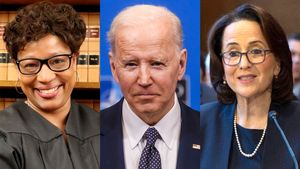




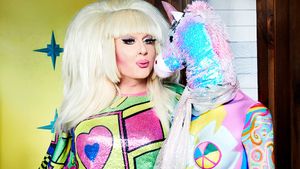



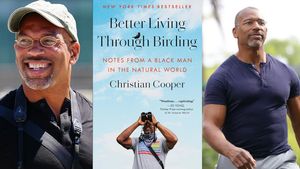

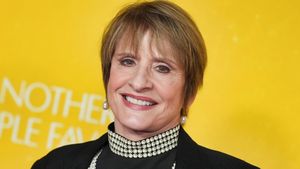

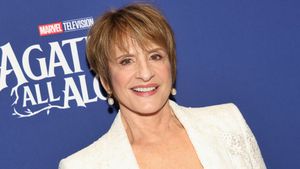








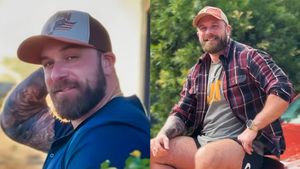

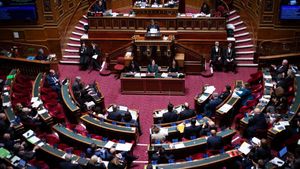
 Keystone/Hulton Archive/Getty images
Keystone/Hulton Archive/Getty images Bettmann Contributor via Getty Images
Bettmann Contributor via Getty Images Rick Maiman/Sygma via Getty Images
Rick Maiman/Sygma via Getty Images TIMOTHY A. CLARY/AFP via Getty Images
TIMOTHY A. CLARY/AFP via Getty Images Gender Liberation MarchRena Schild/Shutterstock
Gender Liberation MarchRena Schild/Shutterstock